Take care of your feet for a strong body
If you’re like me, you don’t think much about your foot health … until something goes wrong. Besides cutting your toenails, do you follow any protocols or engage in specific foot exercises? Can you identify common foot ailments or conditions? Do you know how to treat them?
A little history
The ancient Egyptians favored professional footcare, as depicted by relief carvings from about 2400 BC. Hippocrates (“the father of medicine”) was perhaps the first to describe the treatment of corns and calluses “by physically reducing the hard skin and removing the cause.” The skin scrapers he invented for this purpose were the forerunner of modern-day scalpels.
Podiatry and podiatric medicine represent the study, diagnosis, and treatment of foot and lower leg disorders. Until the turn of the 20th century, podiatrists were independently licensed physicians (or foot doctors), separate from the rest of organized medicine.
Prominent figures — including Napoleon, other French kings, and even Abraham Lincoln — employed personal podiatrists. The first professional podiatry society was established in 1895 in New York, with a professional school opening in 1911. In 1912, the British founded their own society at the London Foot Hospital. In the U.S., foot specialists received licensing to treat patients; by the 1960s, schools started granting the current professional designation of Doctor of Podiatric Medicine (DPM). Currently, there are 11 schools and colleges offering DPM degrees in the U.S.
Your feet
Feet play a crucial role in sustaining overall health.
- Support and balance: Foot bones, muscles, tendons, and ligamentous structures provide the foundation for the body to support its weight and help maintain whole-body balance.
- Mobility: Feet provide a stable base to enable efficient and pain-free, walking, running, and jumping.
- Shock absorption: One’s feet support forces equal to four to six times one’s body weight during walking, and 11 times body weight when running. Foot arches act as natural shock absorbers, reducing the impact on the body during all upright activities. This shock-absorbing effect helps protect joints and the spine from stress and injury.
- Circulation: The numerous blood vessels in the foot contribute to the body’s overall circulation.
- Sensory feedback: The feet, rich in nerve endings, provide information to the brain about the ground and environment. This helps in maintaining balance and coordination.
- Overall health indicators: The condition of the feet often reflects overall body health. Issues such as poor circulation, diabetes, and nerve damage can manifest in the feet, making regular foot care and monitoring that much more important.
Foot anatomy
 The human foot comprises bones, muscles, tendons, ligaments, and arches.
The human foot comprises bones, muscles, tendons, ligaments, and arches.
Bones: One foot has 26 bones grouped into three main categories:
- Tarsals: Seven bones in the back part of the foot, including the heel bone (calcaneus) and the ankle bone (talus).
- Metatarsals: Five long bones in the middle of the foot.
- Phalanges: 14 bones in the toes. Each toe has three phalanges (proximal, middle, and distal), except for the big toe, which has two.
Muscles: Foot muscles divide into two categories:
- Intrinsic muscles are located within the foot. They control fine movements.
- Extrinsic muscles originate in the lower leg and control large movements like walking and running.
 Tendons: These are strong, flexible bands of tissue that connect muscle to bone. The Achilles tendon, for example, connects the calf muscles to the heel bone. It is crucial for walking and running.
Tendons: These are strong, flexible bands of tissue that connect muscle to bone. The Achilles tendon, for example, connects the calf muscles to the heel bone. It is crucial for walking and running.
Ligaments: These tissue bands connect bones to other bones, providing foot stability. The plantar fascia, for example, is a thick ligament on the bottom of the foot that supports the arch. Plantar fasciitis occurs when the fascia, that thick band of tissue, becomes inflamed due to overstretching or excessive strain caused by repetitive stress.
Arches: Three arches help in weight distribution and shock absorption; two longitudinal (medial and lateral) arches and one anterior transverse arch.
Common foot conditions and treatment options
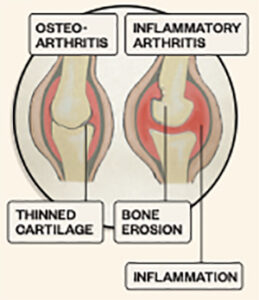 Arthritis
Arthritis
Symptoms
Pain and swelling in a joint or joints; stiffness and reduced range of movement and joint deformity; affects 80–90% of people with rheumatoid arthritis.
Causes
Osteoarthritis, inflammatory arthritis.
Treatment
Medications (acetaminophen, aspirin, ibuprofen, nonsteroidal anti-inflammatory drugs (NSAIDs), corticosteroids, and disease-modifying antirheumatic drugs (DMARDs), as well as heat and cold, physical therapy.
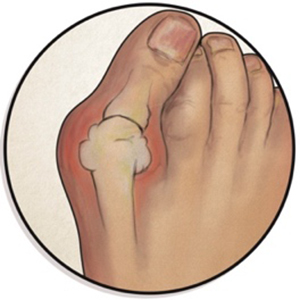 Bunions
Bunions
Symptoms
Bony deformities at the base of the big toe causing toe to point inwards; affects 23% of adults aged 18-65 and 36% of elderly people over 65.
Causes
Family history, arthritis, poorly fitting shoes.
Treatment
Bunion pads, insoles, painkillers, surgery.
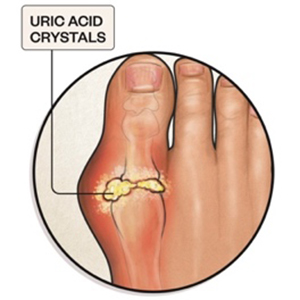 Gout
Gout
Symptoms
Severe pain, swelling in joint(s), stiffness with red, shiny skin; affects nearly 4% of U.S. adults. More common with increasing age. Affects more men than women.
Causes
Buildup of blood uric acid.
Treatment
Non-steroidal anti-inflammatory drugs, corticosteroids, lifestyle changes, and prophylactic treatment.
 Flat feet
Flat feet
Symptoms
No (or low) arches; causes pain in feet, ankles, lower legs, knees, hips, or lower back; affects up to 20% of adults.
Causes
Hereditary, arthritis or injury.
Treatment
Stretches and insoles.
 Plantar fasciitis
Plantar fasciitis
Symptoms
Heel pain when weight bearing. Worse in the morning. Improves on walking; affects 10% of people.
Causes
Plantar fascia inflammation caused by sudden or chronic damage.
Treatment
Rest, proper footwear, heel pads, painkillers, exercises, steroid injection.
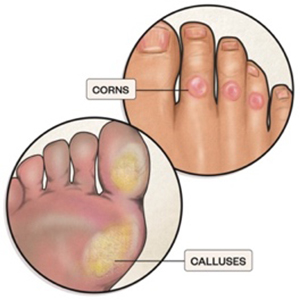 Corns and calluses
Corns and calluses
Symptoms
Corns are thick skin with small circles on toe tops and soles of the feet; calluses are larger areas of rough, thickened, yellowish skin, often found on the ball of the foot; affects between 20-65% of people over 65.
Causes
Excessive pressure or friction from poorly fitting shoes.
Treatment
Remove pressure and apply rehydration cream, corn plasters, pads, or salicylic acid products (but not for those with poor circulation).
 Fungal nail infection
Fungal nail infection
Symptoms
Thickened, distorted nails that are white, black, yellow or green. Sometimes they are surrounded by inflamed, painful skin; affects 3-8% of the population.
Causes
Fungal infections; commonly follows a fungal skin infection.
Treatment
Antifungal nail lacquer solution.
 Diabetic ulcer
Diabetic ulcer
Symptoms
Broken down skin patch with visible underlying tissue; 10% of diabetics will develop a diabetic foot ulcer.
Causes
High or fluctuating blood-sugar levels and poor circulation.
Treatment
See a physician as soon as the condition appears.
 Athlete’s foot
Athlete’s foot
Symptoms
Dry, red, scaly, flaky, itchy, and painful skin between the toes is present in about 15% of the population and is common in athletes with poor foot hygiene.
Causes
Fungal infection. Thrives in moist, warm conditions.
Treatment
Keep toes clean and dry. Apply antifungal cream, spray, or powder; likely to recur even after successful treatment.
 Ingrown toenail
Ingrown toenail
Symptoms
Toenails grow into the skin at the side of the nailbed causing redness, inflammation, and sometimes infection; about 10,000 new cases present each year.
Causes
Poorly fitting shoes or socks, badly trimmed nails, nail trauma, chronic moist skin.
Treatment
Keep feet clean and cut nails straight across; antiseptic cream or spray may help. See physician if severely inflamed, bleeding, or producing pus. Surgery may be required.
Foot/toe strength exercises
Here are a few exercises and tips to strengthen your feet and toes.
Toe curls
Sit up straight in chair with your feet flat on the floor.
Place a small towel on the floor in front of your body, with the short side facing the feet.
Place the toes of one foot on the short side of the towel. Try to grasp the towel between your toes and pull it toward you. Repeat five times before switching feet.
To make more challenging, weigh down the opposite end of the towel with an object.
 Toe stretch
Toe stretch
Sit up straight in a chair, feet flat on floor. Bring one foot to rest on the opposite thigh.
Using your fingers, gently stretch the big toe up, down, and to the side.
Keep the big toe in each position for 5 seconds.
Repeat 10 times before switching to the other foot
 Marble pick-up
Marble pick-up
Place some marbles on the floor.
Using your toes, pick up each marble and place it in a container.
Repeat 10 times.
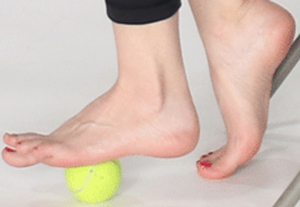 Ball roll
Ball roll
Sit up straight in a chair with your feet flat on the floor.
Place a golf ball, tennis ball, or frozen bottle of water on the floor next to your feet.
Lay one foot on the object and move it around, pressing down as hard as is comfortable; the object should be massaging the bottom of your foot.
Continue for 2 minutes. Repeat with opposite foot.
 Heel Walking
Heel Walking
Raise up to stand on your heels.
Walk forward for 10-20 steps without allowing forefoot to touch the ground.
Keep your toes pointed to the ceiling (dorsiflexion) during the entire exercise.
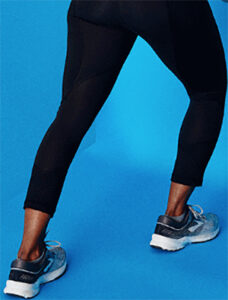 Achilles tendon stretch
Achilles tendon stretch
Face a wall and raise your arms with palms resting flat against the wall.
Move one foot back, keeping your knee straight. Bend the knee of the front leg.
Keep both heels flat on the floor.
Push your hips forward until you feel a stretch in the Achilles tendon and calf muscles.
Hold for 30 seconds. Switch sides. Repeat three times on each side.
For a slightly different stretch, bend the back knee and push your hips forward.
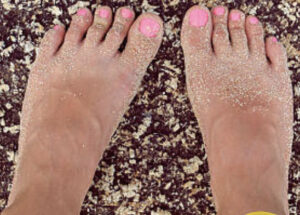 Barefoot Activities
Barefoot Activities
Spend time barefoot on different surfaces, such as grass or sand, to engage and strengthen foot muscles.
 Towel tug
Towel tug
Sit on the floor or bed, keeping your knees straight. Loop a towel around one foot.
Pull the towel back toward yourself until you feel a calf stretch.
Hold for 30 seconds.
Repeat for both feet, complete two sets of 10.
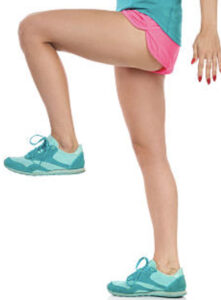
One-leg stand
Practice standing on one foot, gradually increasing duration to enhance stability and strength.
Try to hold the position for 30 seconds.
 Calf raises
Calf raises
Stand up straight with your feet no wider than hip-width.
Lift your heels off the ground with control. Rise up onto the balls of your feet (you should immediately feel your calves contracting).
Pause at the top for one second, then slowly lower your heels back to floor.
Repeat, doing three sets of 10-12 raises.
References
- American College of Podiatric Medicine.
- Foot Education.
- Foot Health Facts.
- Foot Pain Identifier.
- McKeon, P.O., et al. “The foot core system: A new paradigm for understanding intrinsic foot muscle function.” British Journal of Sports Medicine. 2015 Mar;49(5):290.
- Menz, H.B. “Biomechanics of the aging foot and ankle: A mini-review.” Gerontology. 2015;61(4):381-8.
- Michigan Podiatric Medical Association.
- Redmond, A.C., et al. “Development and validation of a novel rating system for scoring standing foot posture: the Foot Posture Index.” Clinical Biomechanics (Bristol, Avon). 2006 Jan;21(1):89-98.
- Win, MMTM, et al. “Hand and foot exercises for diabetic peripheral neuropathy: A randomized controlled trial.” Nursing & Health Sciences. 2020 Jun;22(2):416-426.

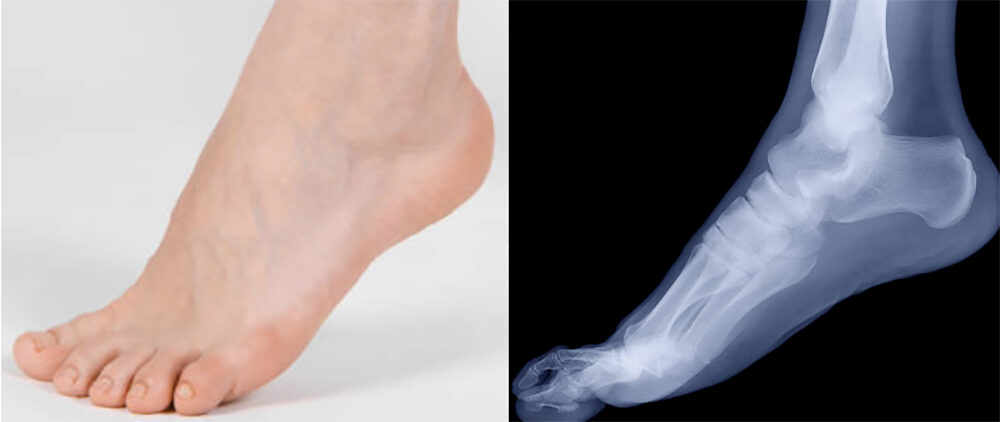



Nancy Kahn - 1962
The one thing you didn’t address is dry and flaky skin on the bottom of the foot, leading to breaks in the skin. They appear as small cuts, and are somewhat painful. Applying lotion three times a day can help soften the skin, and eliminate the crusting and cracking. Please comment. Thank you, Nancy Kahn, class of 1962
Reply
Victor Katch
Actually, what you describe–dry and flaky skin on the bottom of the foot–is commonly caused by athlete’s foot (tinea pedis), which I clearly describe in my article, but did not note that it can also present on the soles of the feet, as you note. Thanks for the input.
Victor Katch
Reply
Edward McClellan
Very interesting Vic. Thank you very much.
Reply
Chris Campbell - 1972 (Rackham); 1975 (Law)
Many of us have sedentary jobs that can affect our function. We sit with our legs bent for hours. I developed a severe inflammation at the Achilles tendon attachment point at the heel. It had major effects on my gait. Eventually I had to cease my daily walking route and seek help.
The most effective treatment for me was stretching. The Achilles tendon stretch shown in the article never worked as effectively for me as heel dips. To do that, place the ball of a foot on the edge of a stair and drop the heel, placing weight on that leg to feel a burn, and hold.
Over time my degree of ankle flexion has increased considerably and the pain and impaired walking have diminished. I use a standing desk at work and alternate standing and sitting frequently.
Reply
Jim MacBain - 1967
Nice article, Vic. Thanks. Yet another thing about this aging process is how thick our toenails become and the increased challenges in trimming them. It also seems to increase the chance of in-grown toenails.
Reply